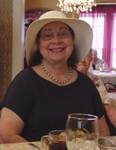Retirement! I finally, actually, irrevocably retired from the directorship of the Van Alstyne Library on June 10, 2011! This was my 4th retirement date. As each one approached, I found I wasn't ready to give up the best job in the world yet. But this time, I actually went through with it. Two days after my retirement date, I became 69. There were other things I wanted to do with my life -- the rest of it. There are some books I want to write. I want to learn to paint. I want to do some house remodeling. I want to visit my grandkids and spend quality time with them. I want to travel with my husband. I have some serious gardening I want to do. I need to work on some family research. I want to volunteer at the Gunter Library and Museum -- just enough to keep me part of the library scene, not enough to tie me down. I want to have time to read books and attend the book discussion group I encouraged to start but seldom had time to attend. I want to explore some of the new gadgets that are being developed, like tablets and Ipads, and phone aps. That's just for starters!
For the rest, I want to change the focus of this blog. I want to link it as a book discussion group. Anyone want to join me? I'll start by talking about two books I've just read on my Kindle: The Hangman's Daughter by Oliver Potzsch and Daughters of the Witching Hill by Mary Sharratt. Both are about women accused of witchcraft in medieval times. The Daughters of the Witching Hill was based on actual historical accounts of trials and deaths of seven women and two men from Pendle Forest in England in 1612. Belief in familiar spirits, charms and chants from the Catholic religion outlawed by the English Reformation, folk magic, and the attitudes of people from this area and time, all are convincingly presented in the life of Elizabeth Southerns and her family in this book. I understand a lot more about a puzzling phenomenon in history because I read this story. It was well plotted and well written and held my interest throughout.
The Hangman's Daughter approaches the subject differently. The author is writing about his own ancestors. He is a descendant of the Kuisl family which plays the major part in the story. The setting is Schongau, Bavaria, shortly after the Schongau witch trials of 1589. The author reminds us the story is a novel, not a scholarly thesis, but has tried to stick to facts as much as possible. The story centers around the town hangman and his family who not only dispatches torture and death, but also healing with herbs and potions. A woman is accused of witchcraft by townspeople for dispensing similar herbs and potions, and because children who like to visit her home are dying. The hangman believes she is innocent of witchcraft, but must follow his trade of torture to make her confess before the town is visited by the authority who will open up a devastating investigation of witchcraft similar to that in 1589. The characters are well described and interesting. The "devil" in the story is depicted with almost super powers, as is the hangman. The twists in the plot maintain interest. Contrasting the attitudes of characters in both novels, it is interesting to see how the accusations of witchcraft build in intensity in two different countries and situations within 30 years. The first story ends unhappily but the second has a more encouraging ending.
A follow-up reading about the Salem witch trials would be interesting.
